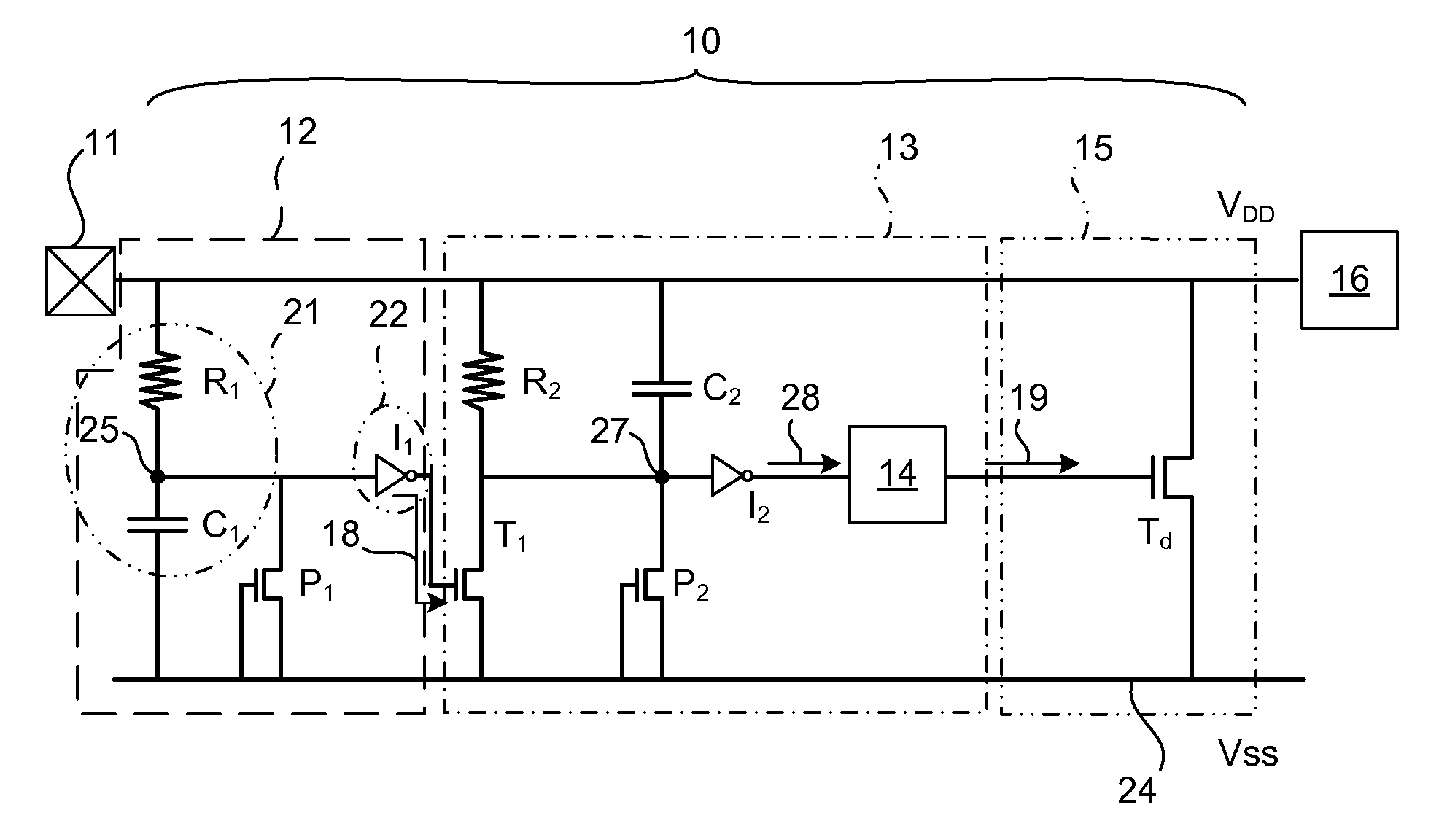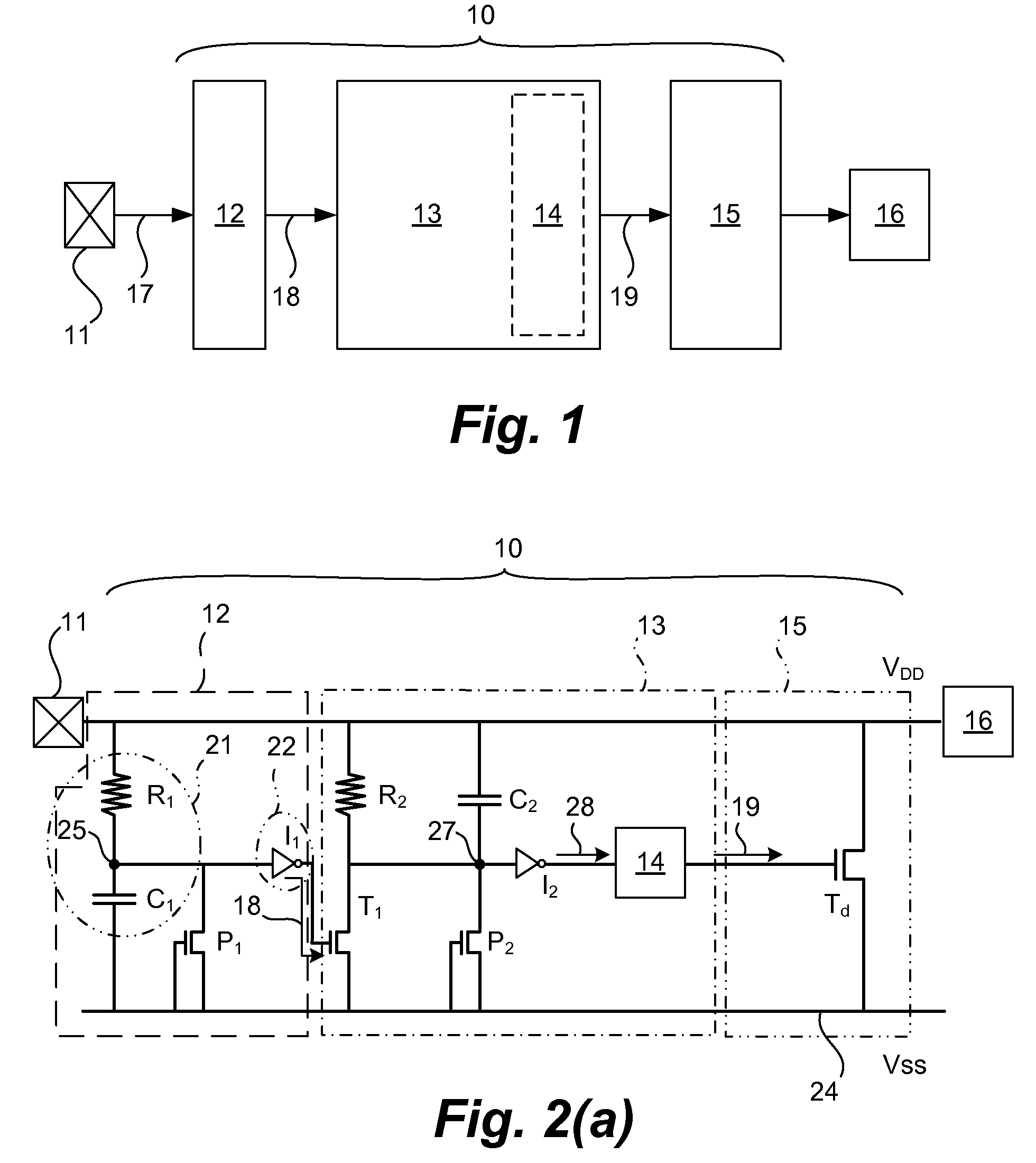Electrostatic discharge protective circuit having rise time detector and discharge sustaining circuitry
a protection circuit and electrostatic discharge technology, applied in the field of integrated circuits, can solve the problems of packaged integrated circuits being exposed to electrostatic charges, integrated circuits are susceptible to damage, and excessive electrical charges, and achieve the effect of increasing the stability of the esd protection circui
- Summary
- Abstract
- Description
- Claims
- Application Information
AI Technical Summary
Benefits of technology
Problems solved by technology
Method used
Image
Examples
Embodiment Construction
[0030]The present invention has been particularly shown and described with respect to certain embodiments and specific features thereof. The embodiments set forth herein below are to be taken as illustrative rather than limiting. It should be readily apparent to those of ordinary skill in the art that various changes and modifications in form and detail may be made without departing from the spirit and scope of the invention.
[0031]The following detailed description describes various embodiments of an ESD protection device and methods for its use. In particular, embodiments of the present invention are configured to rapidly respond to ESD events having a very high slew rate and maintain circuit protection for an extended period of time enabling very high voltages to be sufficiently redirected away from the protected circuitry.
[0032]Although the resistance of an ESD event depends much on the precise circuitry being protected, the terms “excessive voltage”, “excessive voltage”, “ESD en...
PUM
 Login to View More
Login to View More Abstract
Description
Claims
Application Information
 Login to View More
Login to View More - R&D
- Intellectual Property
- Life Sciences
- Materials
- Tech Scout
- Unparalleled Data Quality
- Higher Quality Content
- 60% Fewer Hallucinations
Browse by: Latest US Patents, China's latest patents, Technical Efficacy Thesaurus, Application Domain, Technology Topic, Popular Technical Reports.
© 2025 PatSnap. All rights reserved.Legal|Privacy policy|Modern Slavery Act Transparency Statement|Sitemap|About US| Contact US: help@patsnap.com



